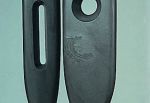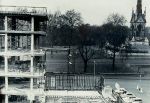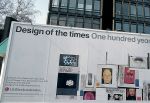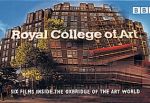| The Royal College of Art is the world's only wholly postgraduate university of art and design - fine art, applied art, design, communications and humanities - offering the degrees of MA, MPhil and PhD. There are some 800 students with an average age of 26. They are taught by 100 academic staff, all of whom are distinguished artists, designers and writers who practise and research.
When you attend the Royal College of Art you join a very special kind of ideas factory where:
·?you become part of one of the most concentrated communities of artists and designers to be found anywhere on the planet ·the diversity of talented individuals, drawn from all around the world, generates a tremendous cross-pollination of ideas and exchange
of influences ·?the teaching staff are leading practitioners in their own right, and their input into your development is supplemented by contributions from an impressive list of visiting professors and lecturers ·?you can take advantage of an unrivalled creative environment and major collaborations with outside partners, both cultural and industrial ·The Show is a major fixture in the calendar of collectors, curators and dealers and representatives from industry and commerce, so your work is seen by key people in your field History: - 1837
- The Royal College of Art starts life as the Government School of Design.
- 1853
- The small-scale School of Design is radically transformed into the National Art Training School, and moves to South Kensington.
- 1896
- The National Art Training School becomes the Royal College of Art, based on art and design practice.
 1922 1922
- The Royal College of Art plays a major role in the birth of the modern school of British sculpture, with students including Barbara Hepworth and Henry Moore. The image opposite shows detail from Barbara Hepworth's 'Two Figures' (Menhirs), 1964
- 1948
- A new emphasis is placed on the teaching of product design and on the provision of highly specialised, professional instruction. New courses include graphic design, industrial design and fashion.
 1962 1962
- All design and applied art courses move to the new Darwin Building in Kensington Gore – named after Robin Darwin, the College’s Principal from 1948 to 1967 and Rector from 1967 to 1971. The image opposite shows the building under construction.
- 1967
- The College is granted a Royal Charter, transforming it into an independent institution of university status with the power to grant its own degrees.
- 1984
- A comprehensive programme of reconstruction, re-equipment and expansion is begun.
- 1992
- HRH The Prince Philip opens the new Stevens Building in Kensington Gore – named after Jocelyn Stevens, the College’s Rector from 1984 to 1992 – marking the 25th anniversary of the Royal Charter.
 1996 1996
- The exhibition 'Design of the Times' celebrates the story of design at the College
- 1996
- The centenary of the Royal College of Art as the College we know today and the year in which Christopher Frayling becomes Rector.
- 1998
- The College scores 23 out of 24 in an in depth review of its education work conducted by the Quality Assurance Agency on behalf of the Higher Education Funding Council for England.
 1999 1999
- About two million people watch the six-part BBC documentary series ‘Royal College of Art’, exploring the life and ambitions of the College at the turn of the 20th century. The annual Show attracts nearly 47,000 visitors in one month, an increase of almost 50%.
- 2000
- The Rector’s book ‘Art and Design: 100 Years at the Royal College of Art’ is published, celebrating the centenary of the formal establishment of the College in 1896.
- 2001
- The publication ‘Designing the 21st Century’ features the work of one hundred of the most important contemporary designers from all over the world. Nearly half of the designers included are graduates of the College.
- 2001
- With a generous grant of £3 million from the Helen Hamlyn Foundation, the future of the Helen Hamlyn Research Centre is secured, and with it, the College’s leading role in inclusive design.
- 2002
- In research, the College achieves a score of 5 for art and design in the national Research Assessment Exercise, putting the RCA at the top of the league of specialist institutions in the UK. The College receives a grant from the London Development Agency to establish an advanced rapid prototyping facility.
- 2002
- The results of the latest survey of recent graduates is published, covering the years 1997 to 2001, and shows that 91% of RCA graduates are in employment, at the right level, in an area directly related to the discipline they studied at the College.
 2003 2003
- After 8 years in the role, Lord Snowdon, a tireless supporter of the College, conducts his last convocation ceremony as Provost. He is succeeded by Sir Terence Conran.
Contact: Assistant Registrar
Royal College of Art
Kensington Gore
London SW7 2EU telephone: +44 (0)20 7590 4444
fax: +44 (0)20 7590 4500
email:admissions@rca.ac.uk
website:www.rca.ac.uk |

